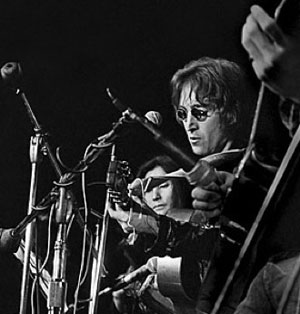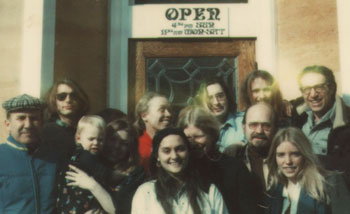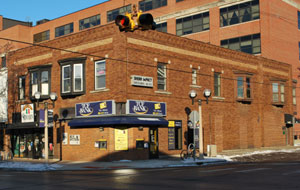
John Lennon and Yoko Ono, playing at the 1971 John Sinclair Freedom Rally at Crisler Arena. (Photo courtesy Leni Sinclair.)
The passage of nearly four decades can dim even the keenest of memories. But to Hiawatha Bailey, the events of that winter afternoon in 1971 are as clear as if they had happened yesterday. Bailey was 23 and working at the communal headquarters of the Rainbow People’s Party in the ramshackle old mansion at 1520 Hill Street in Ann Arbor.
“I was doing office duty,” he recalls, “which entailed sitting at the front desk and answering the phone. Some friends were there, and we were sitting around, tripping on acid, probably, and the phone rings. I pick it up and I hear this voice, ‘Hello, this is Yoko Ono.’”
Bailey, of course, didn’t believe it for a second. “I said something like, ‘Yeah, this is Timothy Leary,’ and hung up. We all got a good laugh out of it.” A few minutes later the phone rang again. This time the voice on the other end said, “Hello, can I speak to David Sinclair, Chief of Staff of the Rainbow People’s Party. This is John Lennon of the Beatles.”
“I wasn’t even that familiar with the Beatles then,” says Bailey, now lead singer for the Cult Heroes, an Ann Arbor-based punk rock band. “I was more into the Stooges and the MC5, more radical rock ’n’ roll. But I knew right away that it really was John Lennon.” He put the call through.
“Dave and John talked for quite some time,” Bailey recalls. “Lennon said, ‘I heard about the benefit that you blokes are putting on, and I wrote a little ditty about John Sinclair and his plight. I’d like to come there and perform it.’” [Full Story]







